Pelvic health is usually not your top priority, I get that, but pelvic health actually gets you closer to your health goals than you think!
At my Pilates studio in Lennox Head I work with clients to improve movement, reduce pain and build strength and flexibility. The goals that my clients have range from “improve my core strength” to “being able to walk the coastal walk without pain”. Pelvic health play a role in achieving both these goals plus a few other like:
- reducing lower back pain
- having better posture
- treating incontinence
- improve leg strength
If you are interested in improving these things read on to find out why good pelvic health will help you with these things and how to get it!
1 Your pelvic position determines your posture and your pain
Your pelvis attaches to your spine at the top and to your legs (femurs) at the bottom. It is wrapped in layers of muscles. The length of these muscles determine to position of your pelvis, whether it tilts forward or back, or whether it is twisted.
The image below shows how tight leg muscles at the front pull the pelvis forward and tight leg muscles at the back pull the pelvis back. This image also shows how the pelvic position affects the position of the spine. If your pelvic position is too far forward or pulling too far back this can cause chronic back and hip pain.
Knowing your resting pelvic position and how this influences the alignment of your spine (your posture) is the first step in understanding how your pelvic health is affecting the rest of your body.
You can assess this yourself by standing side on to a mirror and observing if your pelvis is tipping forward (belly hangs forward) or tipping back (bottom tucks under).

2 Know the difference between pelvic strength vs pelvic tension
Clients will often come to me wanting to improve their core strength. When I dig a bit deeper to understand why they will often tell me they think they have a weak pelvic floor and they need to “tighten things up”. It is important to understand that tight muscles are weak muscles. It is often (but not always) that when people say they have weak pelvic floor they may have symptoms such as incontinence (leaking) or prolapse. These conditions often (but not always) indicate tightness in the pelvic floor muscles that cause pelvic floor dysfunction (including leaking or prolapse).
In order to strengthen your pelvic floor you need to be able to relax it. WAIT WHAT? Yes. Simply focusing on tightening your pelvic floor will usually make your symptoms worse over time!
To relax your pelvic floor it can be helpful to sit on a rolled up towel to bring your attention to the area. On your inhale focus on letting your pelvic floor muscles drop into the towel. Or try this. The more they drop the better they will lift on the exhale, this flexibility and movement of the pelvic floor muscles builds strength over time. If your pelvic floor muscles are unable to relax and move they are not able to get stronger.
3 Pelvic movement for pain free walking
Understanding your pelvic health is essential for pain free walking. We have already discussed how the pelvic is wrapped in muscles and depending on which muscles are tight and which ones are weak influences the position of your pelvis. Similar to the movement needed in your pelvic floor to build strength, the same can be said for your hips. The muscles in your hips each attach to different parts of your pelvis and your legs, as the bones move the muscles support them. There is an interplay between the muscles and bones. If the bones of the pelvis are fixed and don’t move then the surrounding muscles get weak.
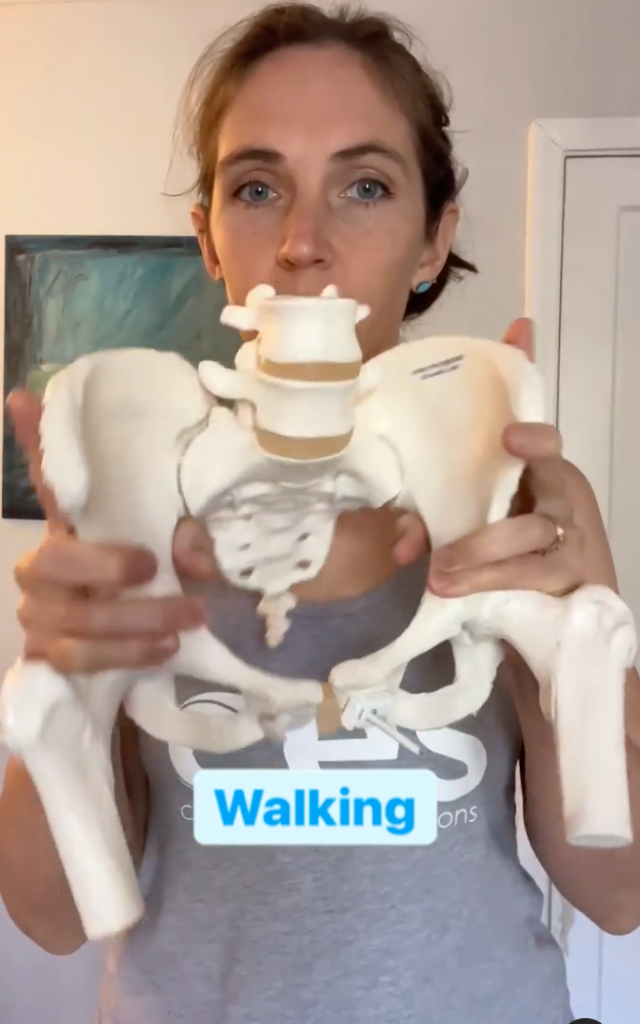
Check out this video showing the movement of the pelvis and legs during walking and what happen if one part of the pelvic girdle gets stuck.
4 Pelvic balance for strong legs
Your legs start where they join to your pelvis. The top of your thigh bone (femur) sits in the bottom of the pelvis. If the position of your pelvis is being tugged by tight leg muscles, then the muscles on the other side are going to be weak and long. This is why the position of your pelvis is important for building leg strength. If you do a lot of leg work without paying attention to the position of your pelvis your progress will non existent at worst, slow at best.
Achieving pelvic balance is about balancing core (abdominal) strength with leg strength to support good pelvic position. This often involves glute stretching and hip flexor stretches to get the balance right for each person.
5 Relaxing pelvic floor for breathing
Your pelvic floor functions as a diaphragm, that means it mirrors the activity of your thoracic diaphragm (under your ribcage). Your pelvic diaphragm moves up and down with your breath just as your thoracic diaphragm does. If your pelvic diaphragm is tight from excessive training or holding on then it will not move with your thoracic diaphragm and this will limit the capacity of your breathing which will, in time, result in a less mobile ribcage.
We all know that breathing is important to supply our bodies with oxygen. It is also important to keep the muscles around our ribcage strong and supple. If they move less because the lungs take in less air these muscles get weaker. They are then less able to support our arms and neck for standing and walking.
In summary…
Your pelvic floor is right in the middle of your body. Every movement you do requires coordination and support from your pelvic floor with other muscles in your body.
Your pelvic floor is the foundation of your core strength. To build core strength without a healthy, functioning pelvic floor is like building a heavy building on the sand. It won’t hold.
For long term independence, continence and mobility, work with a movement professional who understands pelvic floor health to get the most out of your movement efforts and your body.
I am Brigid Pearse a certified Pilates instructor, Pregnancy and Post-natal Exercise Specialist, an ex-dancer and a mum. I run a fully equipped Pilates studio from my home in Lennox Head and I run community Pilates mat classes in Byron Bay, Ballina and online.
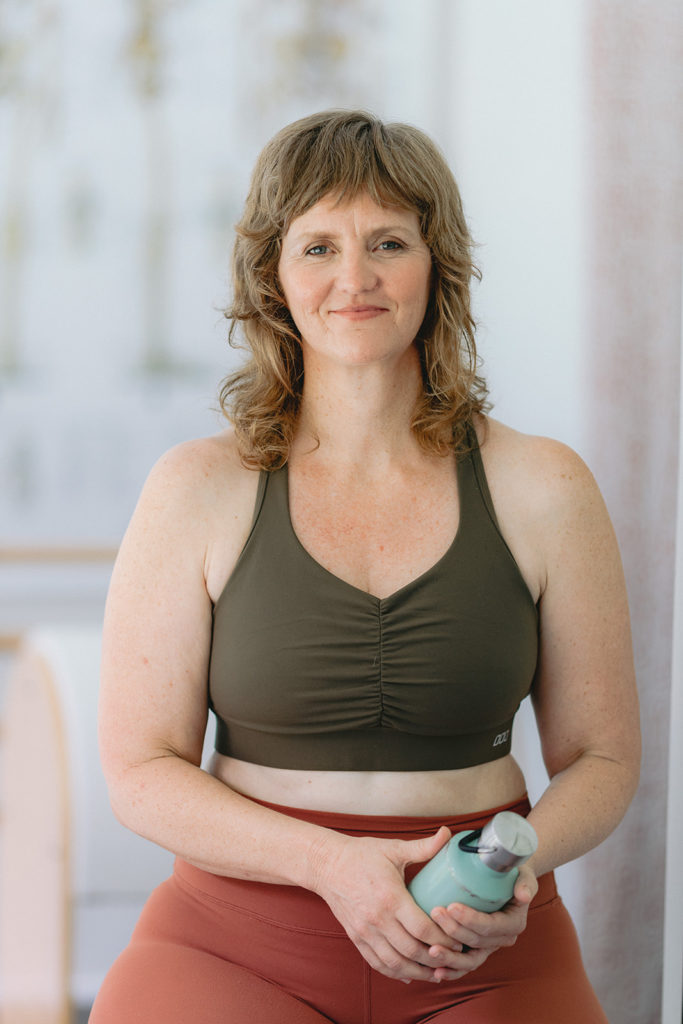
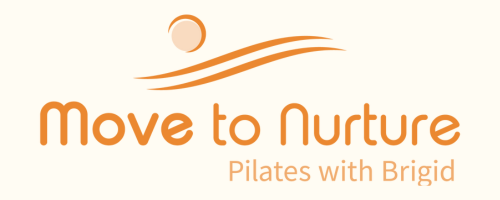
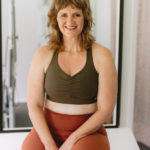
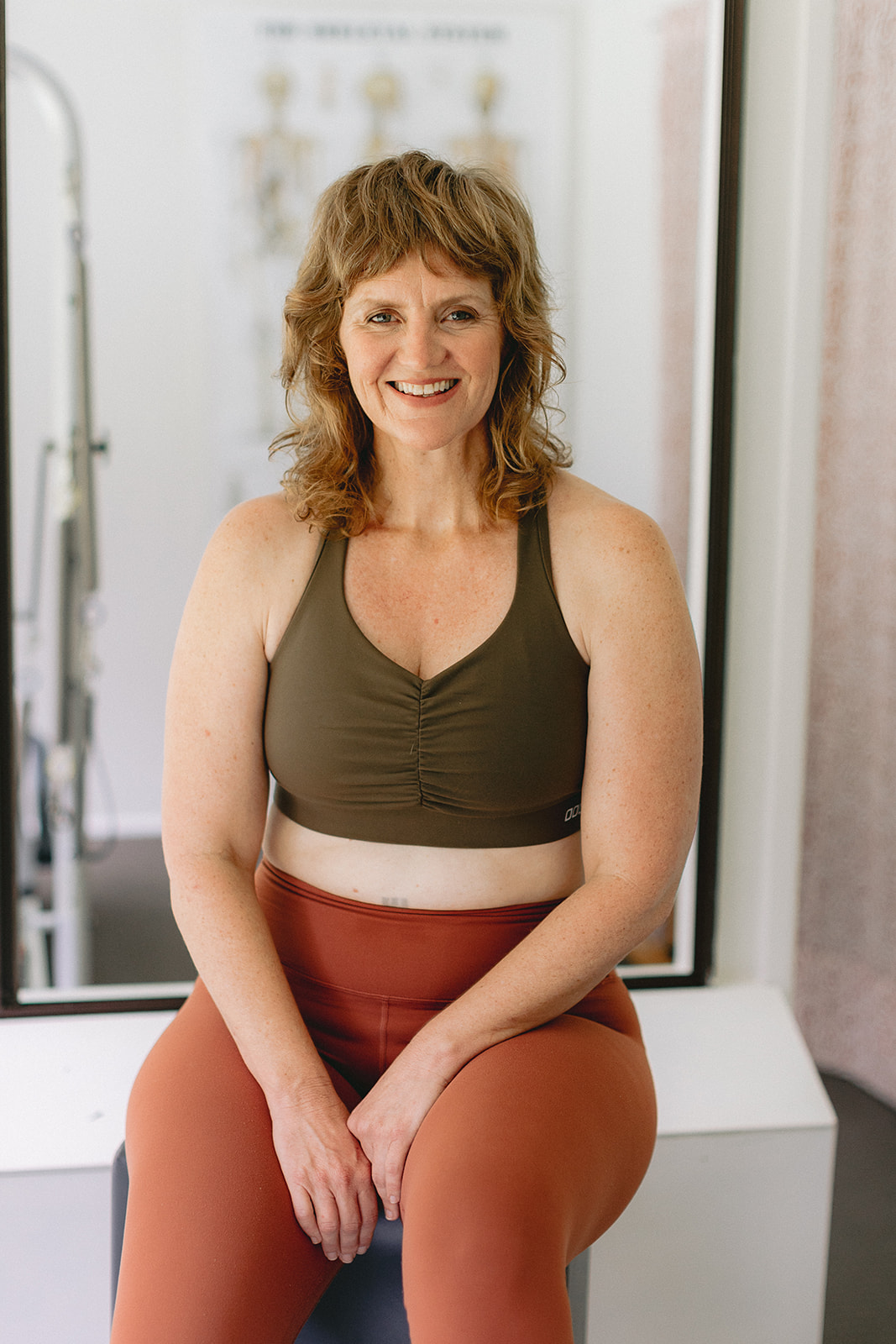



would love you one time to do an online lesson re pelvic floor awareness. any chance?
Hi Margie, Yes definitely. I’ll schedule this in for Spring. Brigid